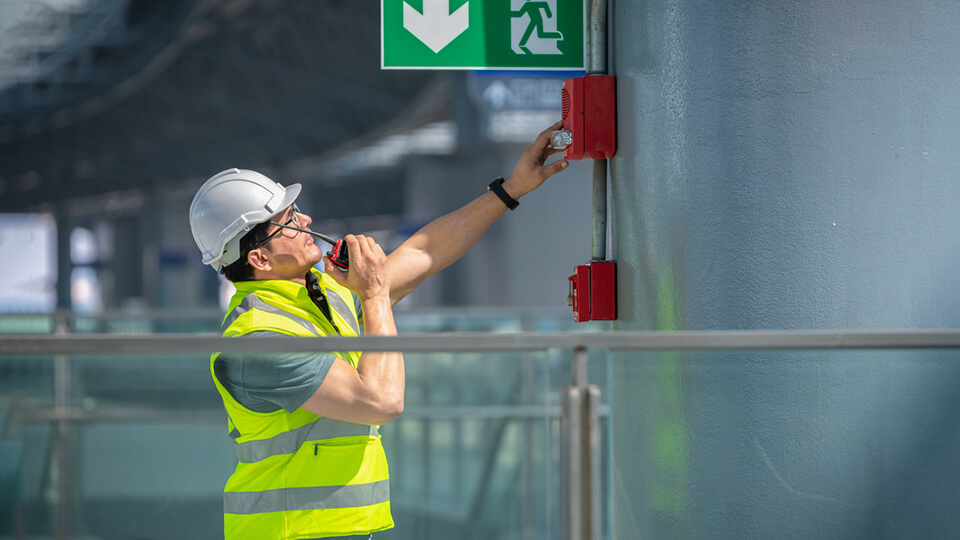Is your workplace in Georgia prepared for an emergency?
American history is filled with industrial accidents and disasters that cost lives, gradually reshaping the rules and regulations that govern workplaces today. Some, like the Triangle Shirtwaist Factory fire in 1911, directly led to new fire safety laws and building inspections for factories.
But just as it can be helpful to look back in order to avoid repeating the negligence and mistakes that worsened past disasters, it also helps to look forward.
With any type of emergency, planning and prep are key. Companies that invest the time and resources it takes to craft a thoughtful, dynamic emergency plan are better positioned to avoid dangerous situations in the first place. And when emergencies do occur—whether they’re natural disasters or man-made—prepared businesses are more likely to keep employees safe and minimize damage.
So, how do you know if your employer is prepared for an emergency? And what are some ways you can help advocate for a safer workplace?
Potential workplace emergencies
Emergency situations can arise at any time. Responsible businesses of all sizes prepare not only because it’s the right thing to do—it’s also the best way to minimize damage and limit downtime.
But emergency preparedness requires a combination of broad and granular thinking. Companies have to be able to envision any potential issue possible in their location, then make a detailed plan that keeps workers safe in the building or evacuates them quickly without chaos. Emergency situations might include:
- Natural disasters, most likely tornados or hurricanes in Georgia
- Chemical or biological agent threats from either within the worksite or from the community
- Workplace violence, intruders or active shooters
- Fire
- Floods
- Power failures
- Injuries or medical emergencies
Emergency action plans and OSHA requirements
Emergency action plans, or EAPs, help employers visualize and prepare for potential emergencies. Once created, EAPs also help employees understand what to do, whether that’s heading to a stairway exit in a fire or moving to an interior room in a shelter-in-place scenario.
OSHA requires some businesses to have EAPs, and companies that handle dangerous materials have higher safety standards to meet. But it’s a good idea for any business to create an EAP tailored to their location, layout and risks.

The first step in developing an EAP is understanding potential hazards, including:
- Occupational dangers, like combustible materials or corrosive chemicals
- Location and proximity to emergency services
- Weather and natural disaster exposure
- Building structure and layout, including exits, windows, secure locations and major systems like HVAC and electrical supply
- Security risks
Once companies understand their potential risks, they’ll need to designate:
- A preferred method to report emergencies
- An emergency escape plan and route assignments, plus safe gathering locations
- A procedure to evacuate workers who are disabled
- A procedure to account for workers and visitors once an evacuation is complete
- A procedure for employees who stay behind to check for coworkers or shut down operations
An EAP planning process should include not only management and public safety or public health professionals, but workers as well. Some businesses, especially large worksites or ones that handle hazardous materials, may also choose to invite first responders to visit the location and make recommendations. OSHA Consultation Service also offers free, onsite safety and health consultations without penalties for violations.
Of course, once a plan exists, it’s up to businesses to make sure workers understand it with the help of regular drills. Paper copies of exit maps should be posted in break rooms and places employees can see them.
How you can help encourage a safe workplace
Many workplace safety tips center on personal preparedness in an emergency. It’s important to understand exit paths—to know, for example, the number of cubes to the stairway, or share a change in disability status so you’re accounted for appropriately. If you work on a hybrid-remote schedule, or if you rotate between worksites, make sure you understand the plan in place for each location.
But workers can also be great safety advocates for their entire organization. Employers are required to maintain safe and healthy workplaces, and it’s OK to speak up if you notice dangerous conditions, like doors locked from the inside, vandalized security cameras or files and furniture blocking exits.
The Red Cross offers worker training in CPR and AED use, so that you and your team can be better prepared for medical emergencies. If your office or worksite doesn’t already have an AED, it could be a life-saving investment.
Talk to an Atlanta workers’ compensation attorney today
If you’ve been hurt in a workplace emergency, a workers’ comp lawyer can help with your case. Contact the Law Offices of Laura Lanzisera today for a free consultation, or give us a call at 404-991-5097.
